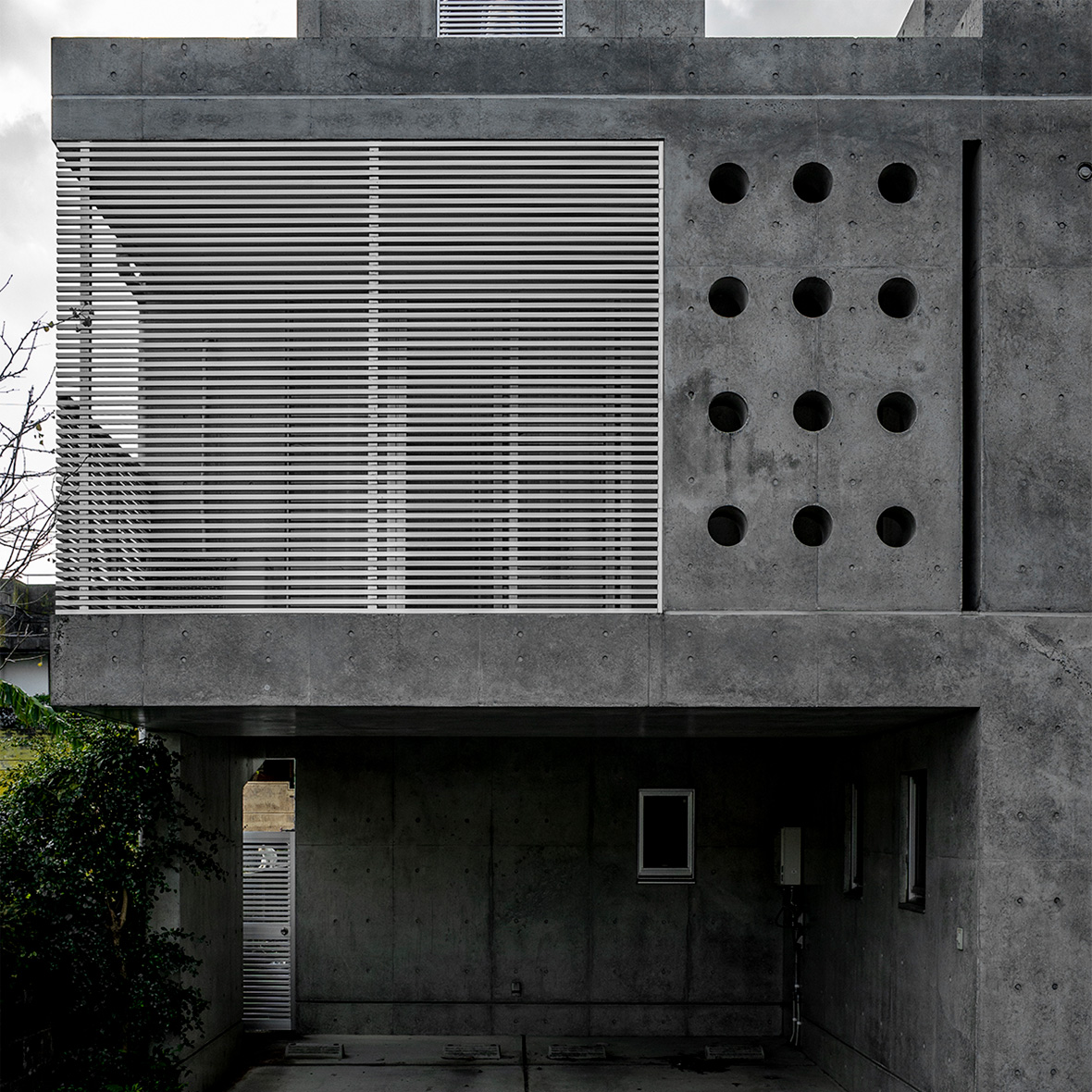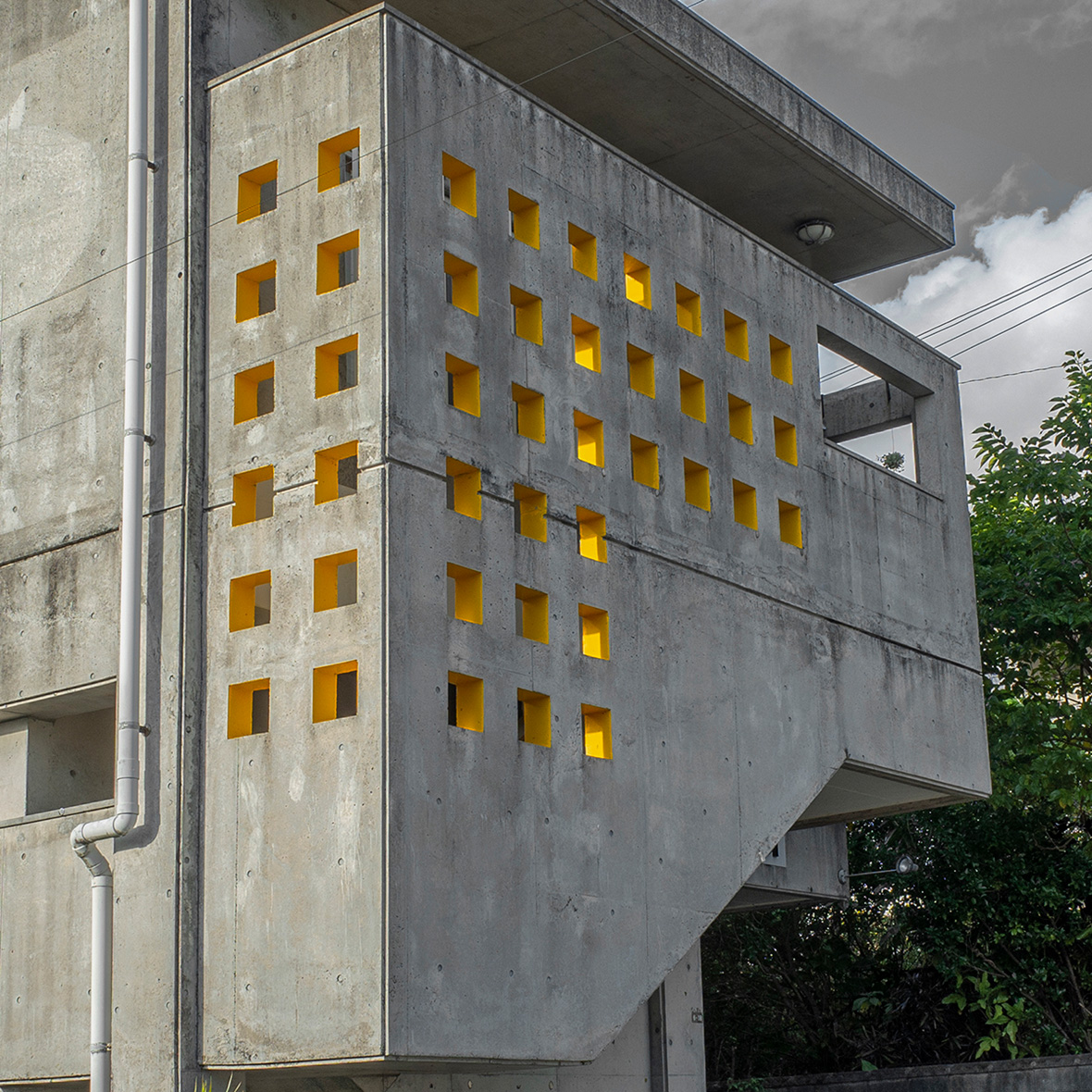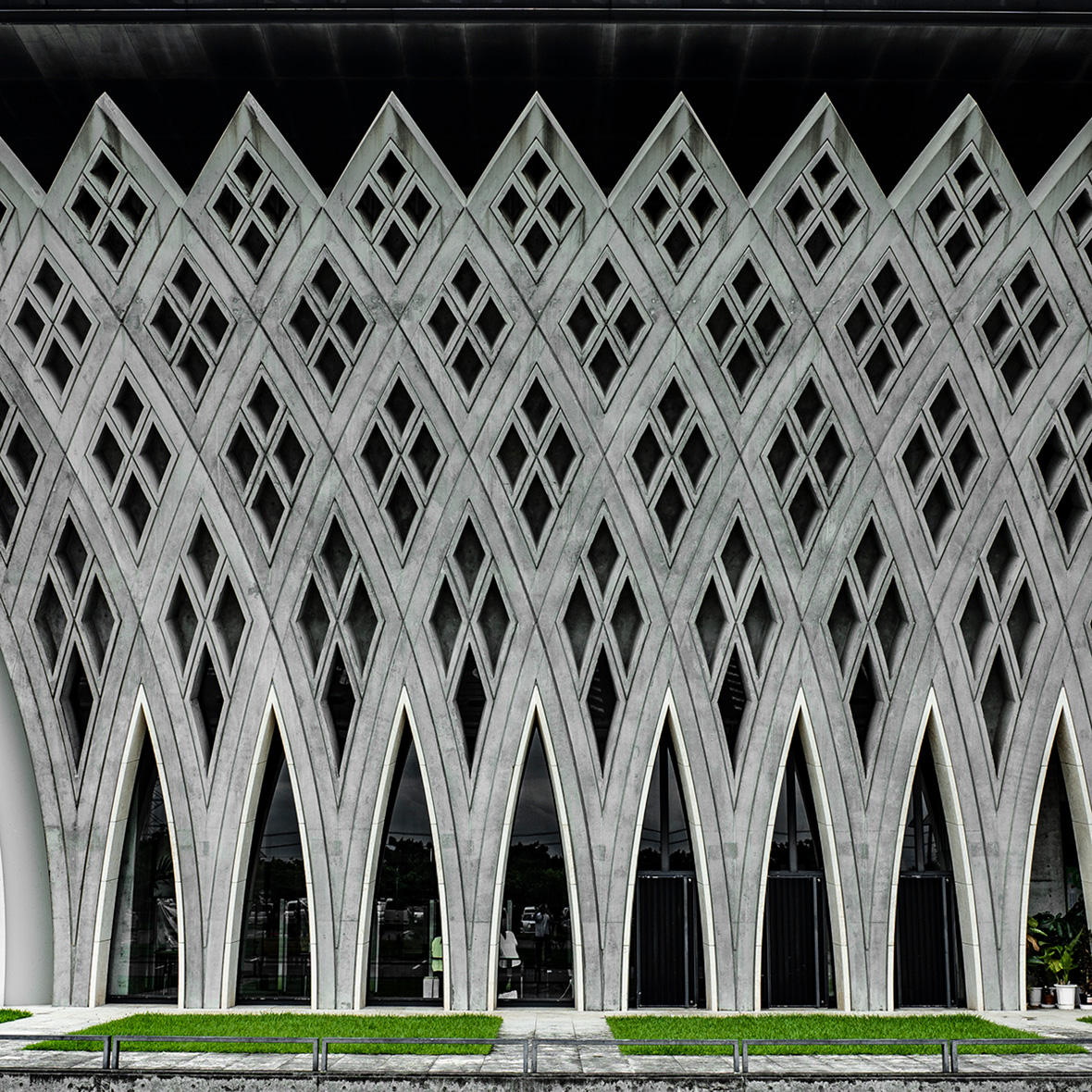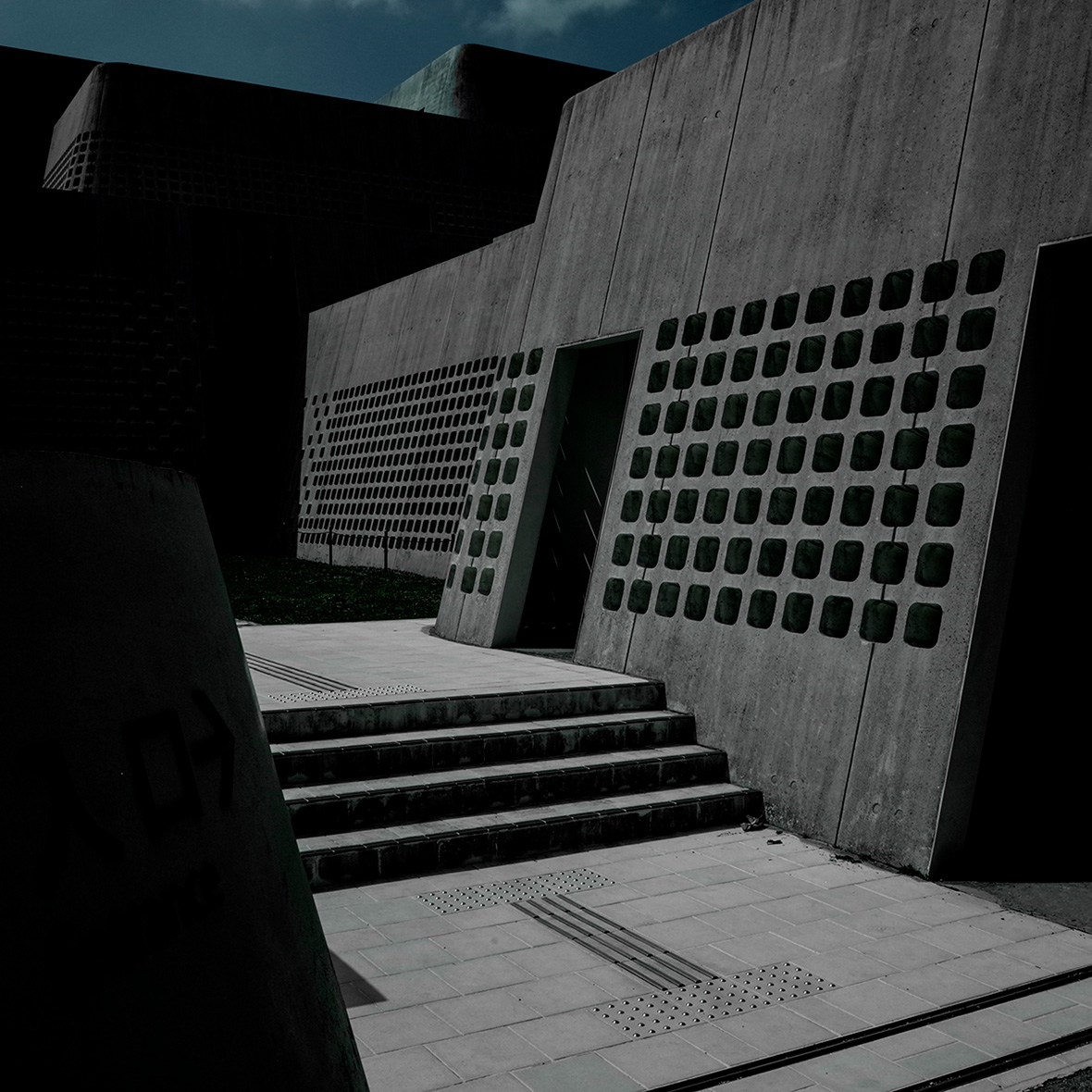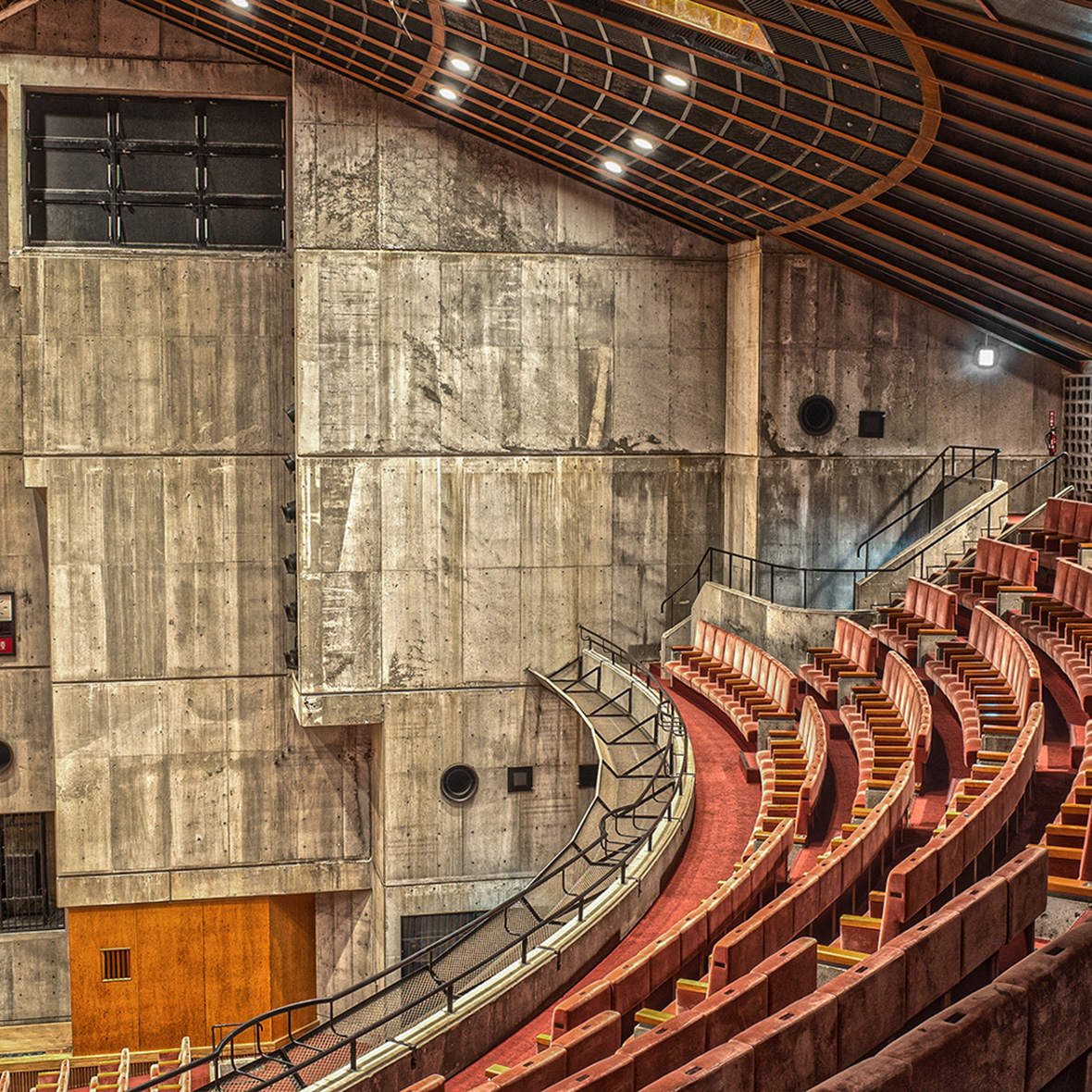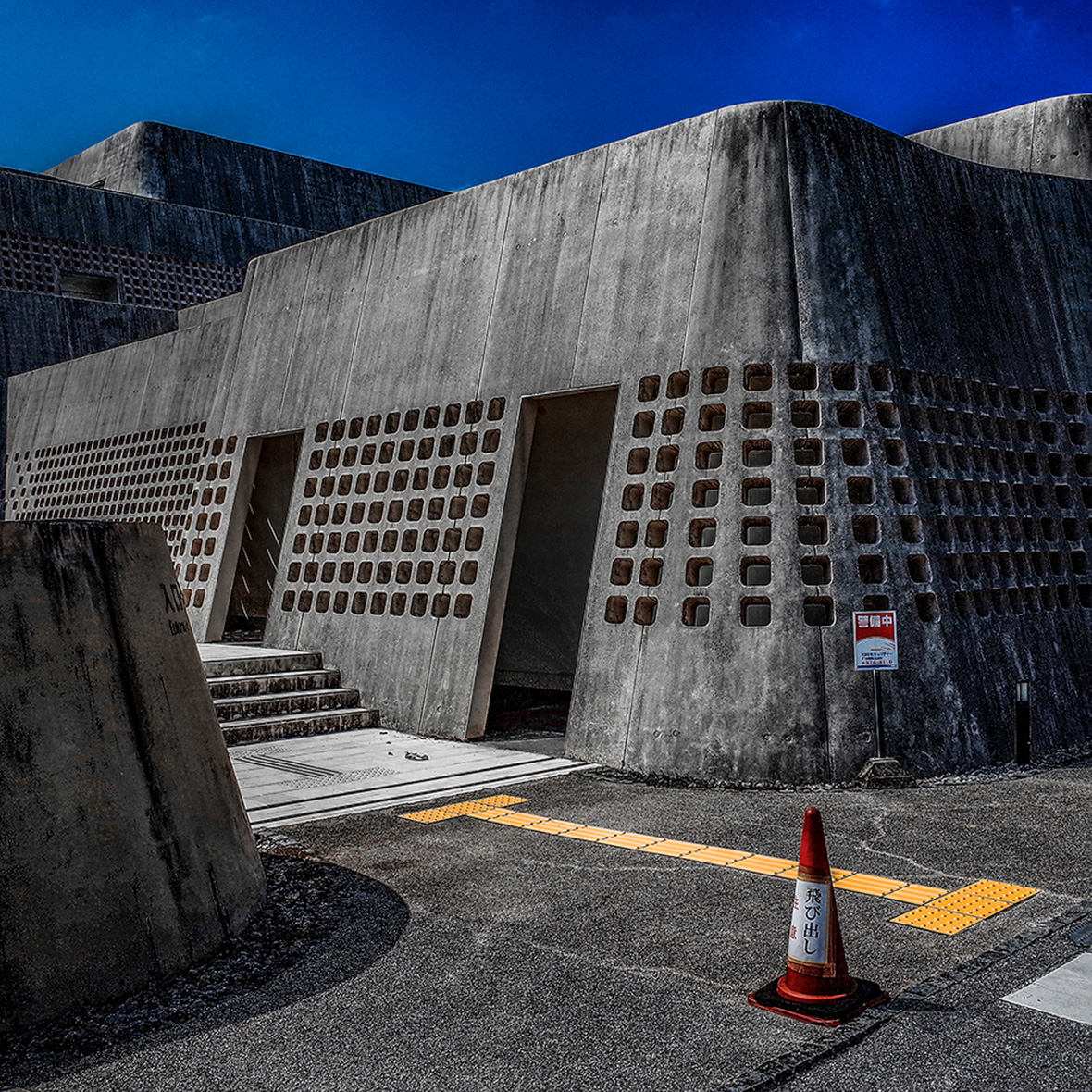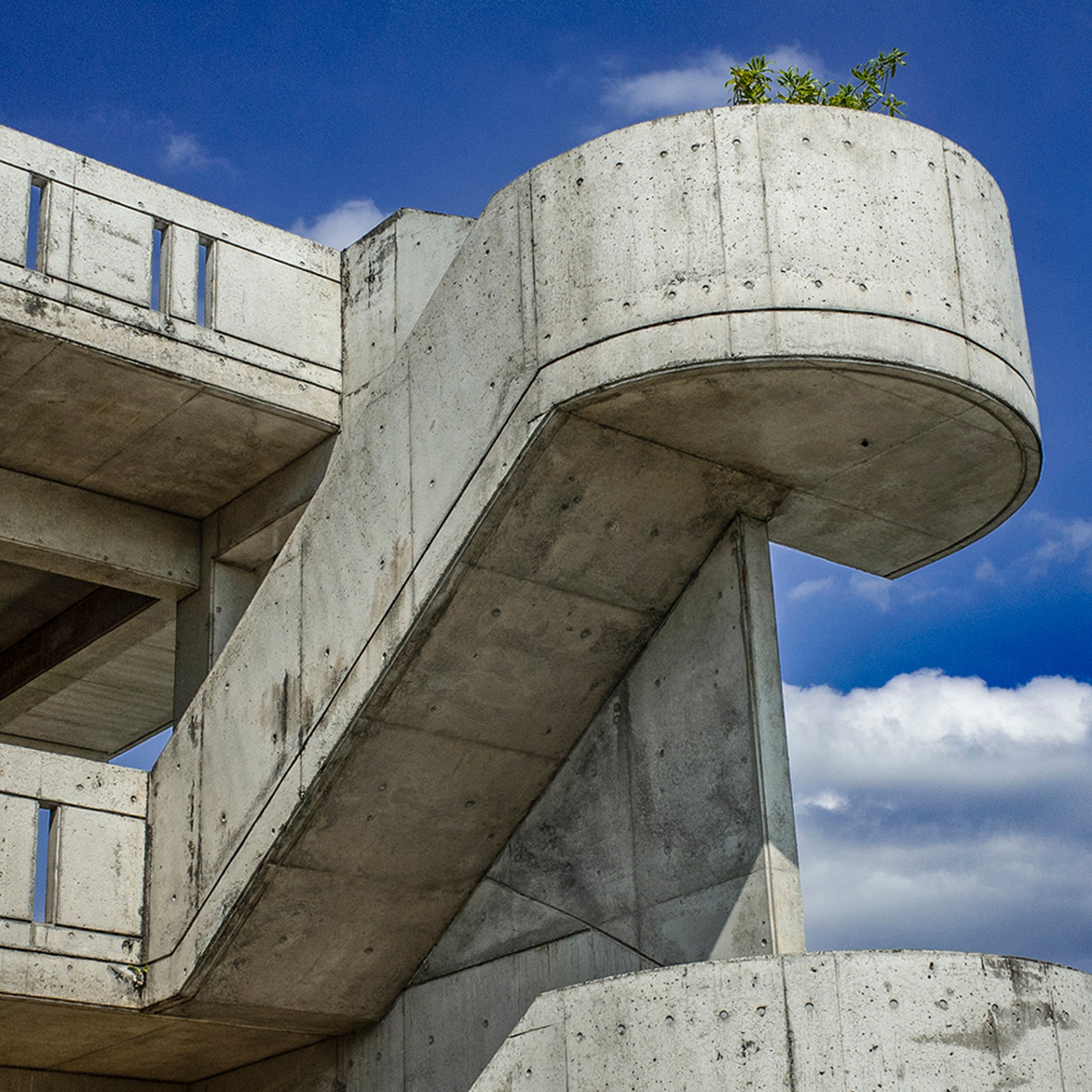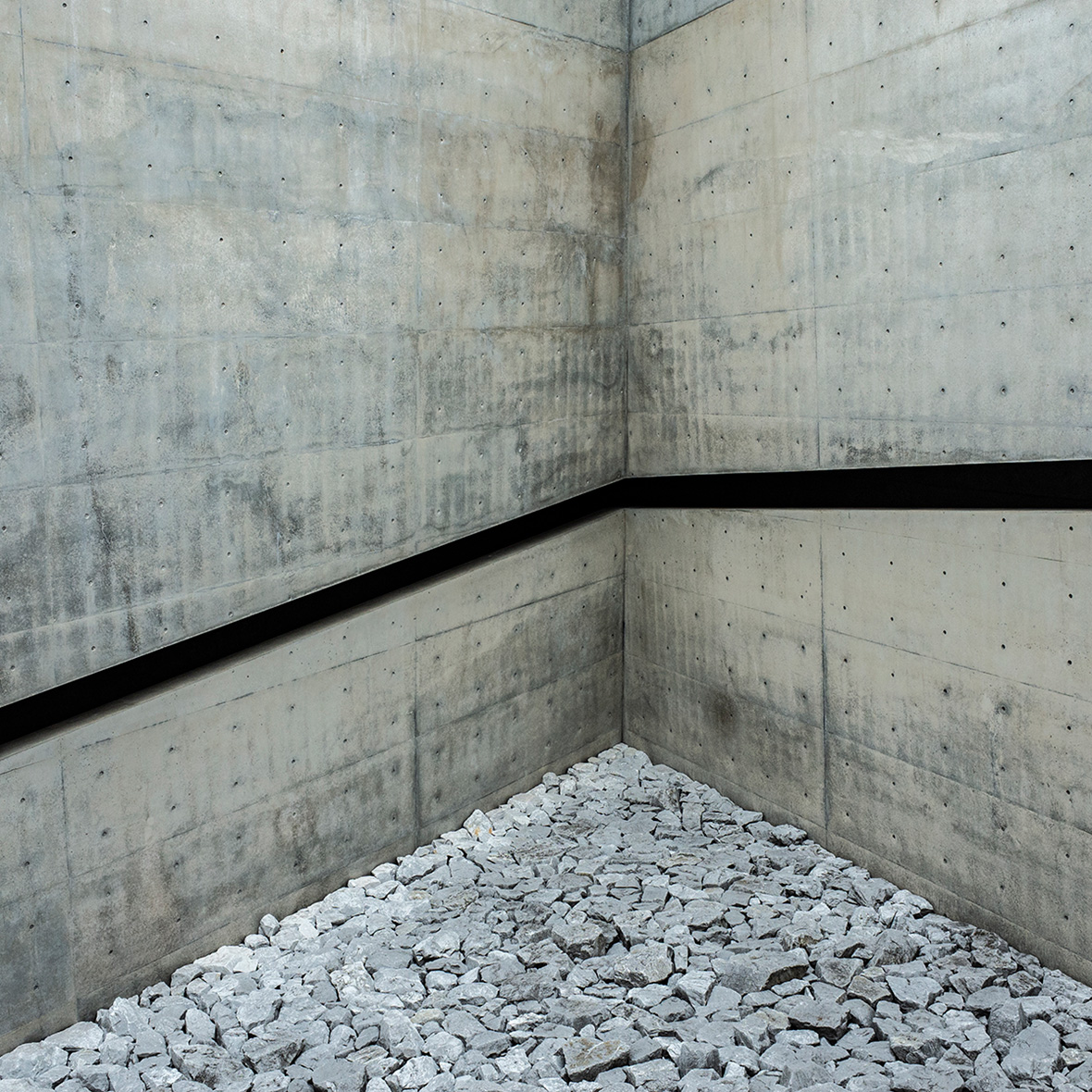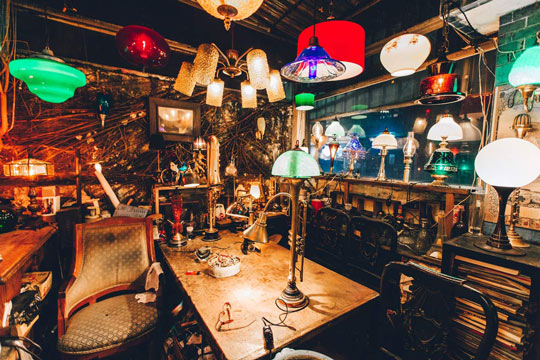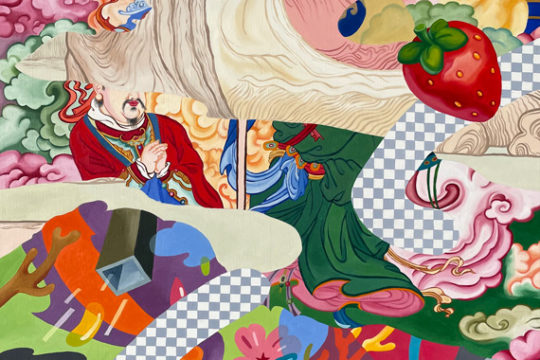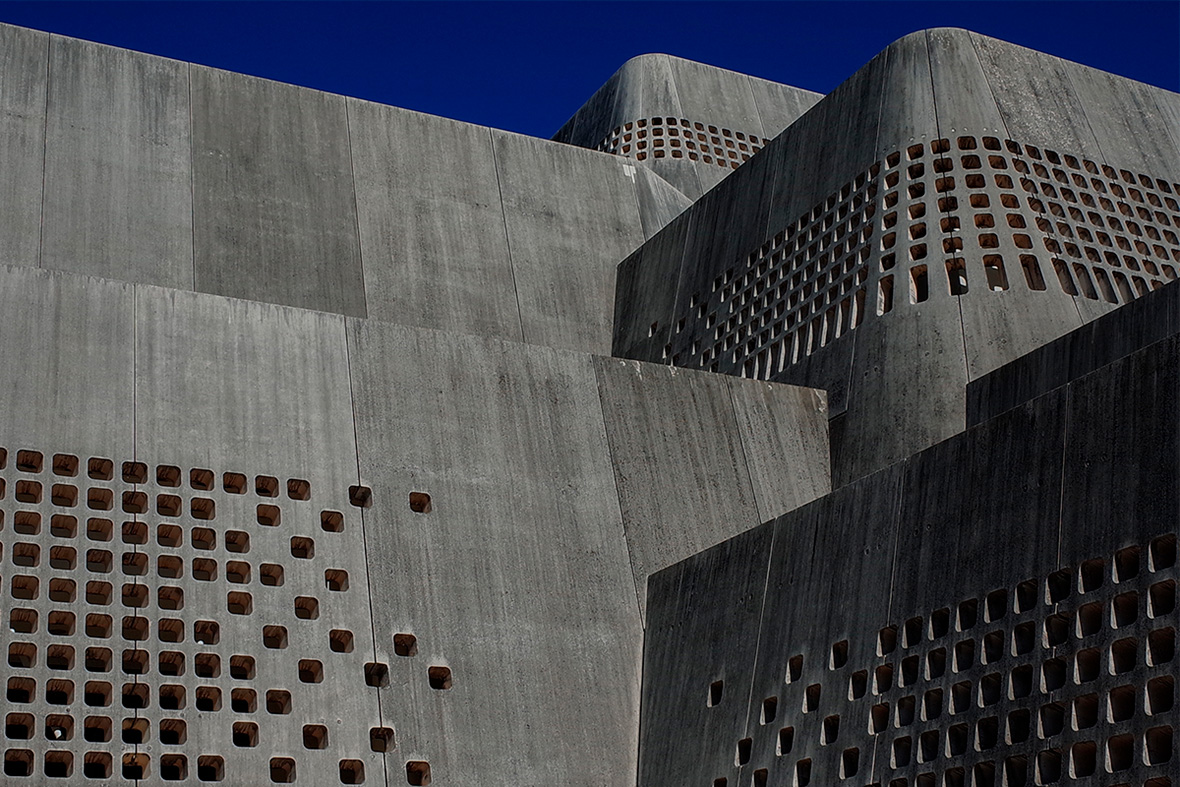
Reinforced concrete and the barebone aesthetics of brutalism rarely come to mind with the mention of Japanese architecture. They might seem like the exact opposite of what typifies the country’s architectural preferences—airy wooden structures with tatami floors and paper panels that slide open for unobstructed views of serene gardens. However, brutalist modern buildings are very much within the pantheon of Japanese architecture, and they stem from the very sense of harmony and reverence for nature that permeates the local tradition for centuries.
Brutal Zen is an Instagram account dedicated to the raw beauty of Japanese brutalism. Created by Okinawa-based British photographer Paul Tulett, it features brutalist structures spanning several decades and various locations. From Olympic stadiums to residential homes and small shops, Tulett appreciates the beauty of brutalist textures, the simple materials, and the interplay of shadow and light. He’s driven by the minimal, solid, and geometrical look of these buildings and by the fact that their brutal beauty is often misunderstood and scorned.
“Someone recently said to me that ‘it’s inexplicable’ that brutalist buildings are allowed in Japan given the country’s wonderful traditional architecture,” Tulett says. “Is it also inexplicable that, say, modern Spanish architecture does not universally incorporate stucco walls and red-tiled roofs?”
提起日本建筑,人们脑海所浮现的往往是轻巧的木质结构、榻榻米地板和纸质推拉门,以及门外静谧的精致院落。似乎钢筋混凝土和野兽派美学与人们印象中的日式建筑毫不相干。但事实上,当代野兽派建筑(又称粗野主义、野性主义建筑)与传统日本建筑有着深远的联系,两者兼备和谐与敬畏自然的意识,这些都是日本数百年传统文化的内在表现。
Brutal Zen 是一个以日本野兽派建筑美学为主题的 Instagram 账号,其横跨日本近现代数十年、足迹遍布全国各地。账号的主人是一位来自英国的摄影师 Paul Tulett,目前生活在日本冲绳岛。Paul 尤其对建筑的纹理、材质以及其所呈现的几何造型非常有兴趣。奥运场馆,日式家庭住宅和小型店铺等等,统统被他用相机拍摄下来。而他之所以开设这个账号,一方面是热爱,另一方面则是出于大部分人们对野兽派建筑的偏见和忽视。
Paul 说道:“最近有人对我说,他们很难理解这样一个精致的国度居然有野兽派建筑的存在。那照这样说,近现代西班牙建筑竟然没有全部采用灰泥墙和红瓦屋顶,这是否同样令人费解?”
Concrete, dominant in almost every building Tulett photographs, is the quintessential element of brutalism and from where the movement derives its name: from Le Corbusier’s use of béton brut, meaning “raw concrete” in French. Simultaneously versatile, inexpensive, inherently sculptural, and powerfully expressive, concrete is central to the brutalist sentiment that materials should stand for themselves. Brutalist buildings rarely have any finishings. They expose their raw materials shamelessly. In effect, they lend their beauty and integrity from them.
They also fully expose their basic structure. Elements like beams, pillars, walls, stairs, and roofs are clearly visible as if asserting their purposes. Even someone with no architectural training can still make sense of how these buildings are built and what they’re made of—brutalist constructions bear no deceiving aspects.
It’s this absolute frankness that Tulett regards as so unique about brutalism. It was also what caught his eye when he first consciously photographed a brutalist building, The National Theatre in London. “What struck me was its commanding presence on the Southbank of The River Thames. My eye was also drawn to the honesty seen in the grain embossment left on the concrete by timber molds,” he says. Tulett is also drawn to the temporality of brutalist architecture and how they gain character with weathering and time.
Paul 照片中的几乎所有建筑都以混凝土为主要原材料。而混凝土则被认为是野兽派建筑的精髓,建筑大师勒·柯布西耶(Le Corbusier)曾称野兽派建筑是 “béton brut”,法语意为 “未经加工的混凝土”。混凝土用途很广,价格低廉,别具雕塑感和强烈的表现张力,这样的原材料充分诠释了野兽派的核心:原始即美。它们往往拒绝多余的装饰,毫无保留地将混凝土的粗旷质感表现出来。
此外,野兽派建筑总会把建筑本身原有的框架结构公示于众。横梁、柱子、墙壁、楼梯和屋顶等元素被暴露在外,挑衅似地强调着各自的分工。即使没有学习过建筑的人也能轻易地判断出——野兽派建筑没有任何掩饰的意图。
Paul 认为,这种绝对的坦率正是此类建筑独有的魅力,指引着他拍摄完成了第一组关于野兽派建筑的照片——伦敦英国国家剧院。“它威风凛凛,就伫立在泰晤士河南岸,每次路过都令人震撼。混凝土上的纹理如同大树的年轮,清晰可见。这种毫无掩饰的直白让我为之着迷。”他说道。此外,Paul 还认为这类建筑会随着岁月变迁蜕变出独特韵味,仅看它们的外表便可读出那些关于光阴的故事。
But the same characteristics that shine in the eyes of Tulett and many other enthusiasts of brutalism also make it a particularly divisive form of architecture. Brutalist structures are so uncompromising and unusual that they almost immediately prompt condemnation in most people, often viewed as aggressive, dull, or downright ugly. Arguably, the critics have a point. Despite being visually impressive, these constructions don’t aspire to be aesthetically pleasing. In his seminal 1955 article for The Architectural Review, architectural critic Reyner Banham describes the brutalist style as an “image,” something visually valuable, but not necessarily beautiful, at least not by classical standards. He relies on Thomas Aquinas’ theory that an “image” is not always quod visum placet, something that pleases the eye, but is, in fact, quod visum perturbat, something that affects emotions. Hence, as Banham shows, brutalist buildings resonate with people on an imminent emotional level rather than merely on an aesthetically pleasing one.
Still, how do these bewildering structures relate to Japanese architecture? As Tulett points out, English architects Alison and Peter Smithson, deemed the progenitors of brutalism, were admittedly influenced by Japanese architectural traditions. In the first defining statement for the movement, published in Architectural Design magazine, also in 1955, they declared that the “new brutalism,” as it was then called, used Japanese architecture as a “yardstick” for principles such as open space concept, purist aesthetics, and reverence for nature. The latter two would have led to a preference for the minimal aesthetic and the adoption of materials in raw form.
Even before brutalism, however, an entire generation of modern architects in Europe and the United States were already looking East, as Felix Torkar remarks: “Frank Lloyd Wright translated the whole lingering Western orientalist fascination into something that resonated with the modernist movement.” Torkar formerly maintained SOS Brutalism, an online database of brutalist structures with preservation aims. Now he’s completing a Ph.D. in Japanese brutalism at The Free University of Berlin. “Many early modernists admired the functional purity of traditional Japanese architecture. Interestingly, Kenzo Tange translated that literally back into Brutalism with the Kagawa Prefectural Office. He created this whole global subgenre of pronounced, protruding lintel and beam constructions.”
野兽派建筑毫不妥协、特立独行的特点,令其一度成为争议话题。有许多人还报以嗤之以鼻的态度,认为这种建筑过分大胆、沉闷无趣,甚至堪称丑陋。但一定程度上,这些批评也并非毫无道理。野兽派建筑虽具有强烈的视觉冲击力,却完全达不到所谓赏心悦目的标准。建筑评论家 Reyner Banham 曾在 1955 年为《Architectural Review》(建筑评论)撰写的一篇文章中提到,或许可以将野兽派描述为一种“意象”,一种具有视觉价值,但不一定美观的事物。其观点足于托马斯·阿奎纳(Thomas Aquinas)的理论,即“意象”并不总会令人赏心悦目(quod visum placet),而能影响人们情绪或是内心状态(quod visum perturbat)。从这一角度看来,建筑的功能可以引起人们情绪上的变化,而不仅仅是停留在取悦他人的层面上。
不过话说回来,这些令人无所适从的建筑又是如何与日本建筑产生联系的?Paul 解释,被誉为野兽派建筑鼻祖的英国史密森夫妇(Alison and Peter Smithson)就曾深受日本传统建筑的影响。1955 年,他们在发表于《Architectural Design》(建筑设计)杂志的文章中写道,“新野兽派”正是以日本建筑中开放空间概念、纯粹美学、敬畏自然等原则为“标尺”而建立的。野兽派建筑对极简风格以及原始材料的偏爱,也正是源于后两个原则。
其实早在野兽派建筑诞生之前,西方的建筑设计师便已将目光投向东方。“SOS Brutalism” 是一个致力于挽救野兽派建筑的在线数据库,网站的运营者 Felix Torkar 说:“在二十世纪早期的现代派运动中,建筑设计师弗兰克·劳埃德·赖特(Frank Lloyd Wright)便将西方对东方的迷恋体现在建筑设计当中。”Felix 目前正在柏林自由大学攻读日本粗野主义建筑专业的博士学位。他接着说道:“许多早期的现代派人士都很推崇日本传统建筑,尤其是日本建筑中纯粹的功能性特点。紧随其后的五十年代末,日本建筑大师丹下健三(Kenzo Tange)结合西方现代派设计了香川县政府大楼(香川县厅舍),在钢筋混凝土结构上加以日式传统造型的帝冠风格,缔造出日本早期野兽派建筑的雏形。”
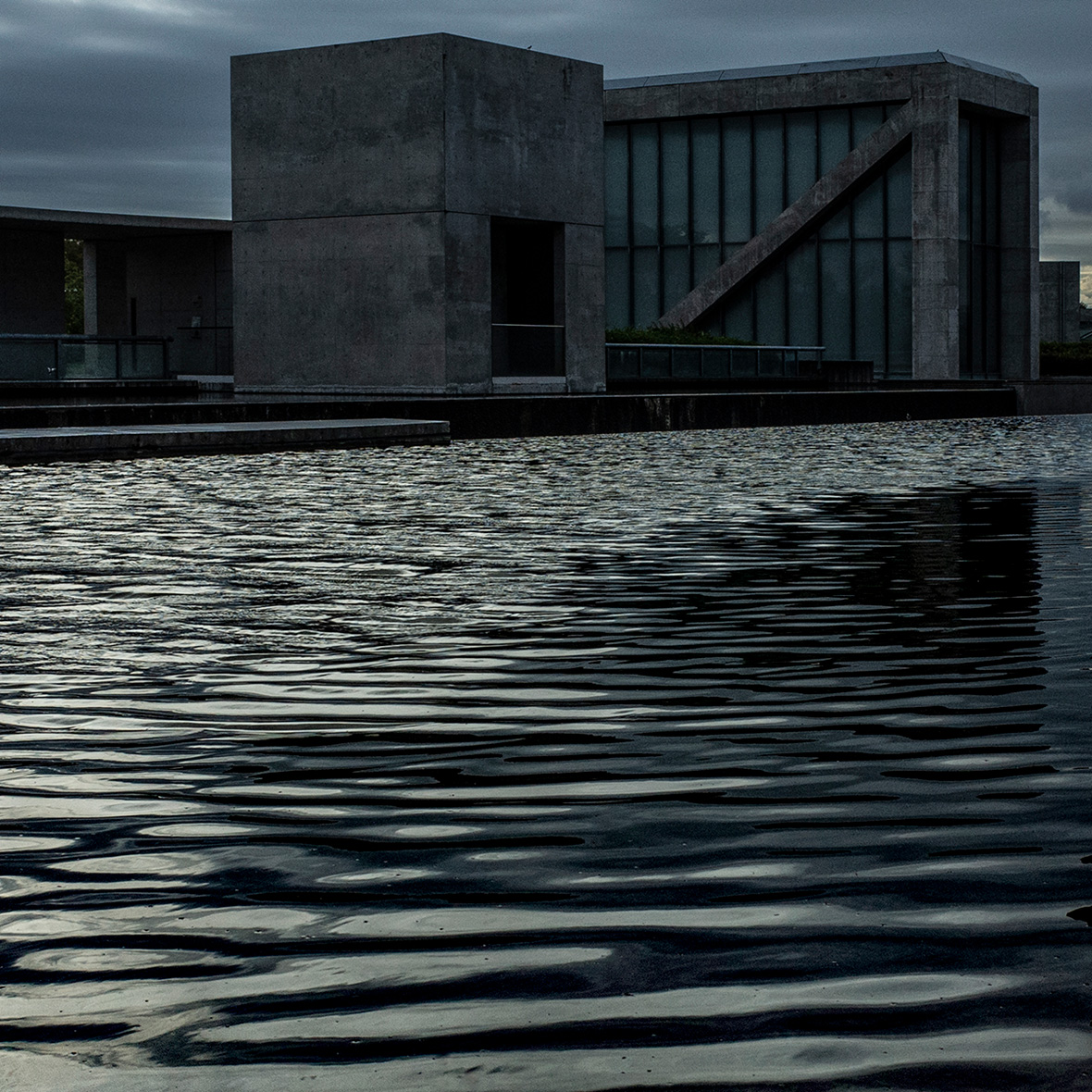
Kenzo Tange is one of the most celebrated Japanese architects of all time. His work was instrumental in postwar reconstruction and in laying the foundation for modern architecture in the country, notably manifested through brutalism and metabolism. But the work of Tange and other early modern Japanese architects was still very much rooted in tradition. For one, many of the fundamental concepts of modern architecture in its broader sense, such as simplicity, honesty, and purity, already overlapped with principles all-important to Japanese culture.
Japanese architects also rejected the abstraction of the so-called international style, very common in the West and represented by rectangular buildings made of glass, steel, and concrete, such as the skyscrapers of Chicago. They preferred to reinterpret their traditional forms in innovative ways, like the iconic suspended roof that Tange designed for the Yoyogi Olympic Arena in Tokyo, which blended vernacular architecture with the technology of modern suspension bridges. Another example is Tadao Ando’s Azuma House in Osaka, a townhouse that’s a concrete monolith with no windows but with a central courtyard that allows for the integration with nature through the sky.
In the collective consciousness today, people associate brutalism to a sense of dystopia, doubtlessly influenced by movies such as Clockwork Orange, Blade Runner, and Akira, which feature brutalist structures within dark settings. However, for mid-century western architects, brutalism often sent the opposite message, representing a socialist utopia. In the Soviet block, it encapsulated political confidence and state authority. But in Japan, its practical usage and functionality always eclipsed any ideological aspects, as explains Ben Leighton, founder of cultural platform Tokyo Cowboy: “I don’t view brutalism in Japan as something that was historically destined to happen. I think it was reactionary in the face of large-scale destruction after the war. Tange and the other architects were prioritizing efficiency and utilitarianism.”
The practicality of architecture is essential when considering Japan’s unforgiving climate. Icy winters and humid summers are the yearly norms. Traditional Japanese architecture follows the idea that one can always warm up by wearing more layers of clothes, but there is no way to escape extreme heat and humidity. So, architects designed buildings with summer in mind. Thin walls, paper screens, and open windows are great for ventilation and keeping interiors cool, but they don’t do a very good job in thermal insulation. However, thick concrete walls and floors maintain a constant temperature all year round, keeping the heat out during summers and the cold out during winters. They’re also suitable for privacy and sound isolation, as we can see with Ando’s house, which is quite convenient considering Japan’s overpopulated and compact cities.
And there’s also the function of endurance. Japan is a country battered with a high rate of natural disasters. Because of that, its architecture has grown heavier and sturdier in the last century, more capable of withstanding recurrent earthquakes, floods, typhoons, and fires. This is particularly noticeable in Okinawa, where ninety percent of new buildings are made of concrete. “For good and bad, the Okinawans aren’t ones for ideology,” Tulett says. “Brutalism here was born of necessity. Okinawa is seasonally battered by typhoons. Housing anything from hair-salons to aged-care centers, even contemporary constructions often fit the neo-brutal moniker.”
丹下健三是近现代建筑设计历史上最为著名的大师之一。他的作品对于日本战后重建和现代建筑发展,有着举足轻重的作品。其中他的大部分作品主要为野兽派和新陈代谢派(Metabolism,认为城市和建筑不是静止的,而是像生物新陈代谢那样是一个动态过程。1966年,丹下健三完成了山梨县文化会馆,其较为全面地体现了新陈代谢派的观点)。这样的观点并非空穴来风,丹下健三和其他早期日本现代建筑师的作品仍然深深植根于当地传统,许多现代建筑中的基本原则(例如极简、直白和纯粹)都与日本文化所倡导的理念并行不悖。
此外,日本建筑师对西方国际风格(International Style,起源于西方二十到三十世纪,其着眼于解决社会公众在生理和物理上的生活需求,采用新技术并强调建筑空间与建造上的经济性,忽视历史传统和地方特点,其形式无论在世界上何处都是相似的方盒子、平屋顶、白粉墙的样式,因此得名)的理念不敢苟同。这种风格在西方社会十分常见,最有代表性的就是用玻璃、钢和混凝土建造的矩形建筑,如芝加哥摩天大楼、还有一众当代的方盒子商务用楼。日本建筑师的创新的方式更希望建立在传统日本建筑的风格之上,比如丹下健三设计的“东京代代木国立综合体育馆”,采用标志性的悬浮屋顶设计,出色地将“日本神社”与现代悬索结构完美融合。另一个例子是安藤忠雄(Tadao Ando)在大阪设计的“住吉的长屋”(Azuma House),这幢房子仅有约 112 平方米,夹隔在连排住宅之间,从外面看,像由一整块混凝土结构筑成,没有窗户,只有中央庭院连接天空,与周边环境融为一体。
在今天的集体意识中,人们将野兽派建筑与反乌托邦联系在一起,这无疑是受到了《发条橙》、《银翼杀手》和《阿基拉》等电影的影响。各式各样的野兽派建筑出现在这些电影当中,往往勾起人们对未来、甚至超现实的幻想。然而,对于二十世纪中叶的西方建筑师来说,野兽派建筑则传递出截然不同的信号,其代表的是一种社会主义的乌托邦。在上世纪苏联,野兽派建筑便代表了政治野心与国家威望。但在日本,这类建筑的实际用途与功能性远远盖过任何意识形态问题,文化平台 Tokyo Cowboy 的创始人 Ben Leighton 说:“我并不认为野兽派建筑在日本的出现是历史必然。我觉得它更像是人们对战后大规模破坏而作出的回应。对丹下健三和其他建筑师来说,效率与实用主义是首要事项。”
日本经常发生恶劣的天气,常年冬季寒冷、夏季潮湿,混凝土建筑的实用性无疑是必要的。日本传统建筑遵循的理念是,天气寒冷时,人多穿几层衣服总能暖和起来,但却没有办法逃避酷热和潮湿。因此,建筑师在设计建筑时都会考虑到夏季天气。薄薄的墙壁、纸质屏风和敞开的窗户都是有利于通风和保持室内凉爽的设计,但在隔热保暖方面就有所欠缺。相对地,厚厚的混凝土墙壁则有助于全年保持恒定温度,形成冬暖夏冷的效果。另外,这种建筑在隐私和隔音方面做得很好,正如安藤忠雄所设计的长屋,考虑到日本密集的人口和紧凑的城市空间,这样的建筑为生活带来更便捷的选择。
除此之外,还有耐用性的考虑。日本是一个自然灾害频发的国家,地震海啸时有发生。上个世纪以来,日本建筑变得越来越重,越来越坚固,许多建筑都能抵御反复发生的地震、洪水、台风和火灾。这一点在冲绳尤为明显,当地 90% 的新建筑都是由混凝土建成的。Paul 表示:“冲绳人不讲究意识形态。当地的粗野主义建筑是出于生活的必要性而诞生。那里经常遭受台风,所以从美发沙龙到老年护理中心,乃至很多现代建筑都可以归类为新野兽派建筑。”
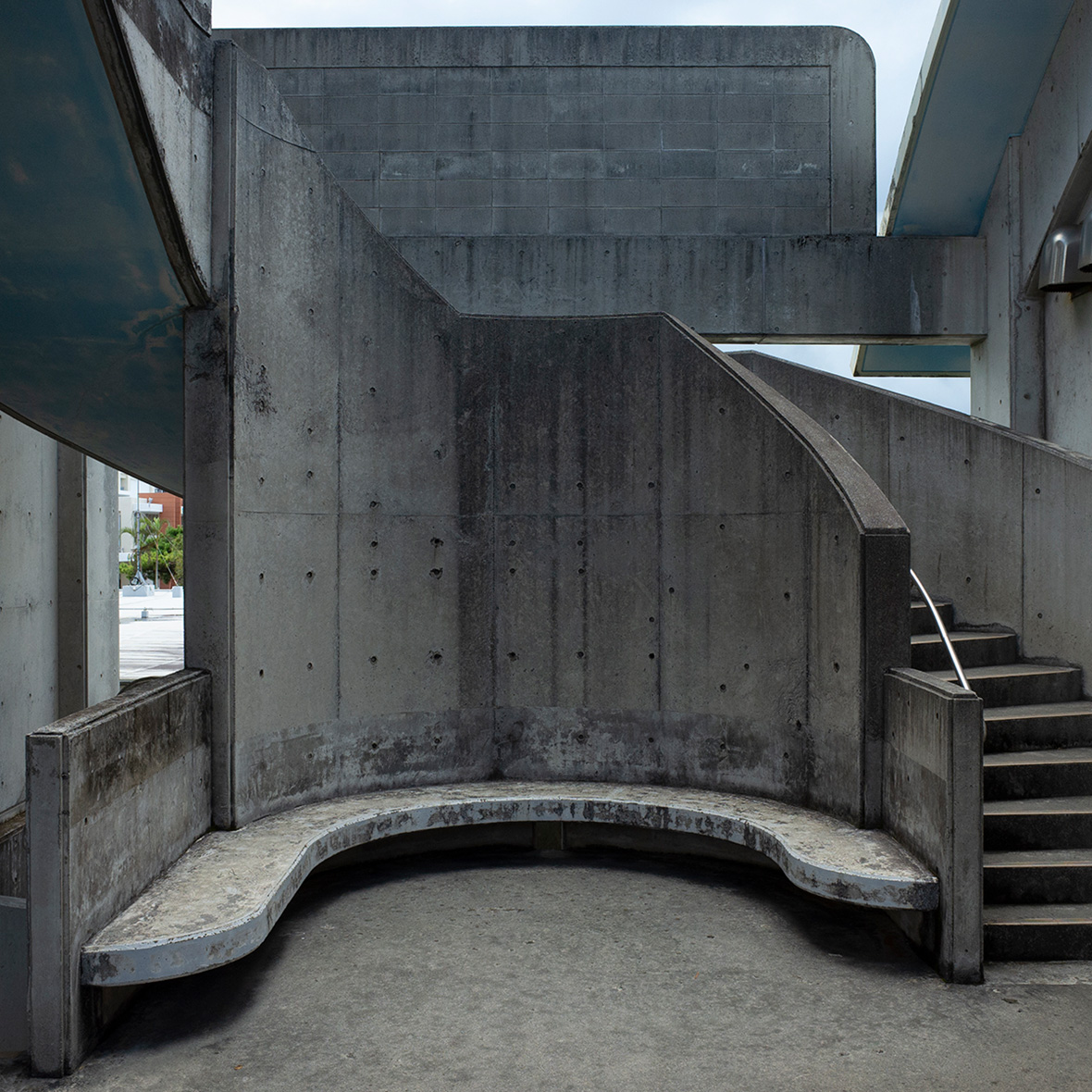
Given the wealth of concrete architecture in Okinawa, it is hard for Tulett to pick one favorite brutalist building. But, he elected three that stand out the most.
Nago City Hall
Built in 1981, Nago City Hall is an unusual building with a colonnaded exterior made of breeze concrete blocks. The structure acts as a climbing frame for plants to grow, blocking sunlight penetration and enhancing interior ventilation, both much-needed in subtropical Okinawa. “The whole structure exudes an earthy pungency that is tempered by the fragrance of weaving bougainvillea. Drinks vending machines aside, the place smacks of an undiscovered jungle ruin,” Tulett says.
He observes critical regionalism in the structure’s pergola roofs whose angles match those of traditional Okinawan homes. The building also used to flaunt a large set of shisha statues, Okinawan lion figures with the talismanic purpose of guarding and protecting the building. However, these were recently removed due to salt erosion and the risk of falling during a typhoon.
Nago Civic Center
Just across the road from the City Hall sits the Nago Civic Center. Completed a little later in 1985, this building features a far more obvious brutalist facade than its tree-inspired neighbor.
“From a fifteen-minute drive away, we can already see the sheer and impenetrable wall of concrete,” Tulett says. The building houses two large assembly halls, one with the capacity of about one thousand people and another one half its size, and a community center. All share a common grassed area that faces the sea, reflecting the importance of the courtyard in traditional Okinawan architecture.
“Both the Civic Center and the City Hall, along with a few other buildings in the area, make for a real theme park of concrete architecture, an instructive microcosm of fully functional and heavily utilized brutalism in Okinawa.”
Naha Prefectural Museum
Opened only in 2007, the Naha Prefectural Museum is an exceptional example of neo-brutalism. The cascading structure made of local Okinawan limestone houses the collection of local art, history, and natural history artifacts.
“This building borrows from ancient Okinawan fortresses, the gusuku. Yet, it’s simultaneously futuristic with its gentle curves, rectilinear geometry, and stacked forms. Despite the sci-fi feel, the grid pattern, and the resulting chiaroscuro, actually represents deference to the flower block widely used for screening, ventilation, and decoration,” Tulett says.
冲绳的粗野主义建筑如此之多,让 Paul 的镜头陷入选择困难。他从中挑选了最为典型的三栋建筑。
名护市市政厅
建于 1981 年,外层由焦化混凝土柱拼接,为植物的生长和攀爬提供了条件。阻挡强光直晒,增强内部通风,这两点非常适合冲绳亚热带气候下人们的居住。“整个结构散发着粗犷和原始的气息,但又被缠绕其间的三角梅花中和。如果不是摆放着饮料自动售货机,这个地方看着就像一处人迹罕至的丛林废墟。”Paul 说道。
他发现这幢建筑的棚架式屋顶很有当地特色,其角度与冲绳的传统住宅一致。建筑四周曾被布置了冲绳“狮像”(shisha)雕像,寓意守护和保护这幢建筑。然而,由于盐分侵蚀,且为了避免台风期间掉落造成的危险,这些狮像此前已被挪走。
名护市民事中心
市政厅对面就是名护市民事中心。这幢建筑建成时间稍晚,于 1985 年完工,建筑四周同样被绿植填充,相比于名护市政厅要更具有野兽派的气质。
“离远就可以看到这面坚不可摧的墙壁。”Paul 说道。大楼里有两个会议厅,一个可以容纳 1000 人,另一个仅有一半大小,其他区域还被分割成社区中心。所有空间共享一处面朝大海的草地,这也反映出庭院在传统冲绳建筑中的重要性。
“民事中心、市政厅,加上当地一些其他建筑,共同构成了当地的混凝土建筑主题公园,是冲绳实用派粗野主义建筑的一道缩影。”
冲绳县立博物馆
冲绳县立博物馆 2007 年才被建立,是一栋典型的新野兽派建筑。它采用冲绳当地石灰石建造,呈现出层叠式的结构,馆内收藏有当地的艺术、历史和自然历史文物。
“这座建筑借鉴了冲绳古代御城(gusuku)的设计,同时拥有柔和的曲线、直线几何轮廓,抽象地外在表现,像是一座别具未来主义的城堡。虽然充满科幻感,但其镂空的造型却与冲绳民间传统墙面 ‘Flower Block’ 有着相似之处。‘Flower Block’ 在当地非常流行,是广泛用于遮挡、通风和装饰的传统墙面风格,通常表现为将墙面镂空为规则花纹的图案。”Paul 解释道。
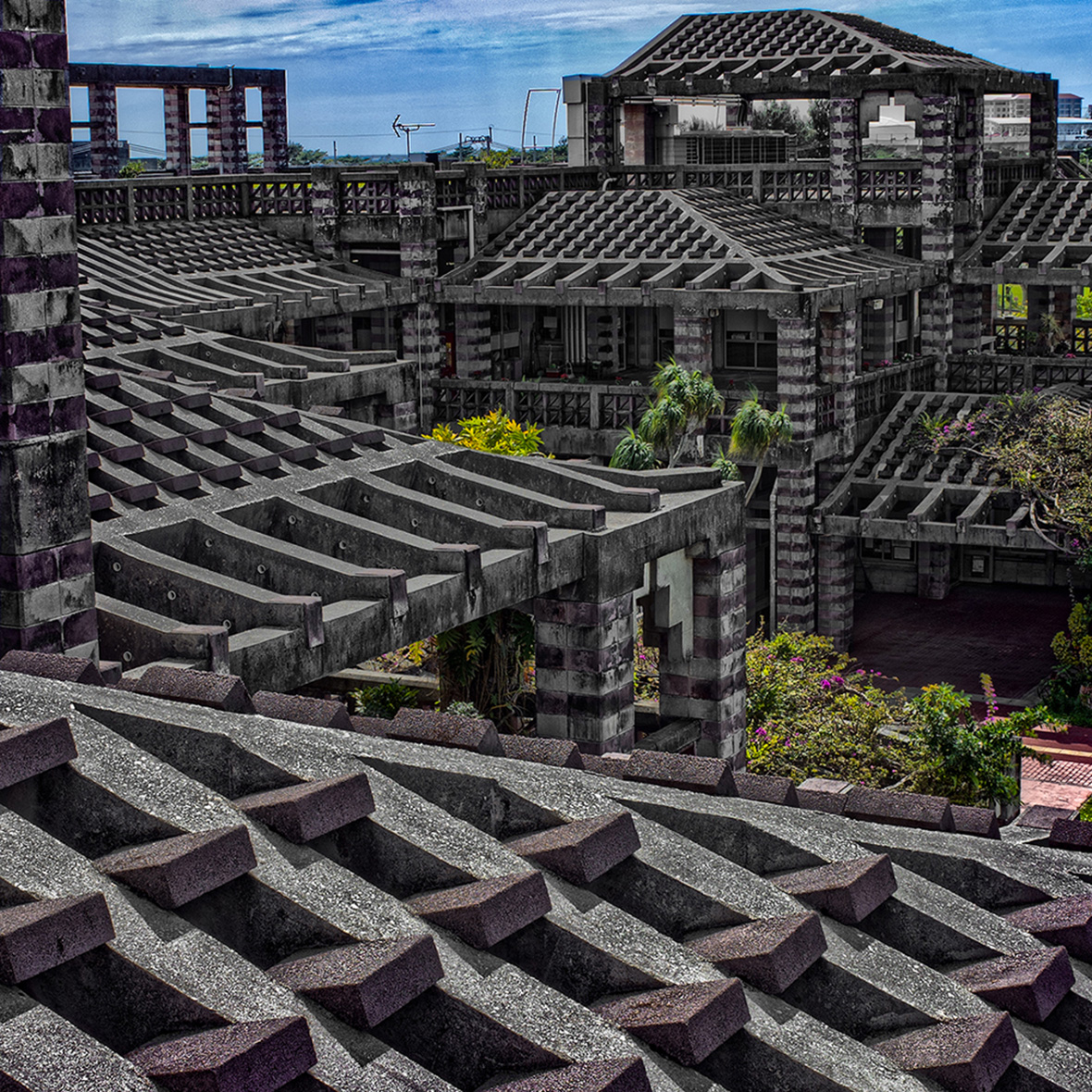
“All three buildings follow the principles of legibility, accessibility, and permeability,” he adds. “They also ooze the values of brutalism: raw concrete, simple repetitive features, and imposing visuals. Yet, each is unique. Together, they reflect the diversity of concrete architecture in Okinawa.”
Both the Nago City Hall and the Civic Center are fully functioning buildings that, beyond their civic purposes, also serve as great gathering spots for Okinawans. But Tulett believes that most Okinawans are, at the very least, indifferent towards them. “To be honest, while the locals socialize in and around these brutalist buildings, I don’t think they give them too much thought. This is best exemplified by the lack of protest at the mooted demolition of the Nago City Hall,” he says.
Another fascinating building that has its future uncertain according to recent news is Tokyo’s iconic Nakagin Capsule Tower, perhaps the world’s greatest exponent of metabolist architecture. In truth, for decades now, several brutalist buildings and their derivatives worldwide have been constantly under the threat of the wrecking ball. Such an impending threat is what prompted the initiative behind SOS Brutalism, which aims to raise awareness of endangered buildings and even identifies the ones facing imminent risks of demolition—currently 209 structures out of over two thousand listed in their database.
Paul 表示:“这三幢建筑在设计上都遵循了易于理解、无障碍性和通透性原则,同时处处体现出野兽派建筑的理念:原始混凝土、极简规整的设计和令人震撼的视觉效果。然而,每一幢建筑却又都是独一无二的,这也反映出冲绳混凝土建筑的丰富。”
名护市市政厅和民事中心都是功能齐全的建筑,除了作为政府办公楼外,也是冲绳人聚会的场所。但在 Paul 看来,大多数冲绳人其实并不在意这些建筑。他说:“老实讲,当地人对野兽派建筑其实没有太多的想法。曾经有人提出要拆除名护市市政厅时,完全没有人提出抗议。”
2021 年,同样面临被拆风险的建筑是东京的中银胶囊塔(Nakagin Capsule Tower),这或许是世界上最杰出的陈代谢派建筑代表。近几十年来,世界各地一些野兽派建筑及其衍生建筑一直面临拆消的威胁。也正因如此,SOS Brutalism 线上倡议平台由此诞生。该组织旨在提高人们对濒危建筑的认识,寻找并极力挽救即将面临拆除风险的建筑。目前,该组织数据库的 2000 多幢建筑中,有 209 幢正面临被拆的困境。
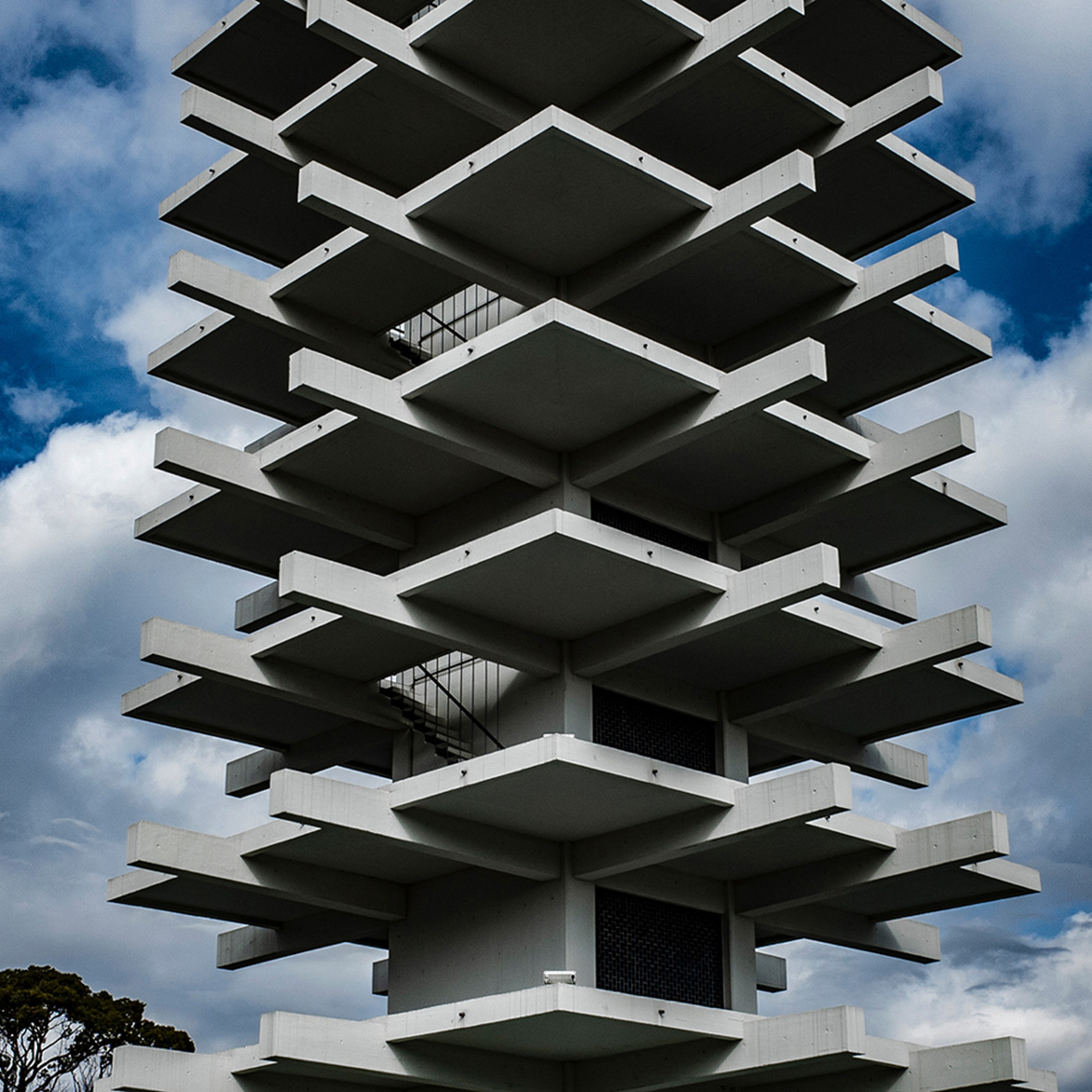
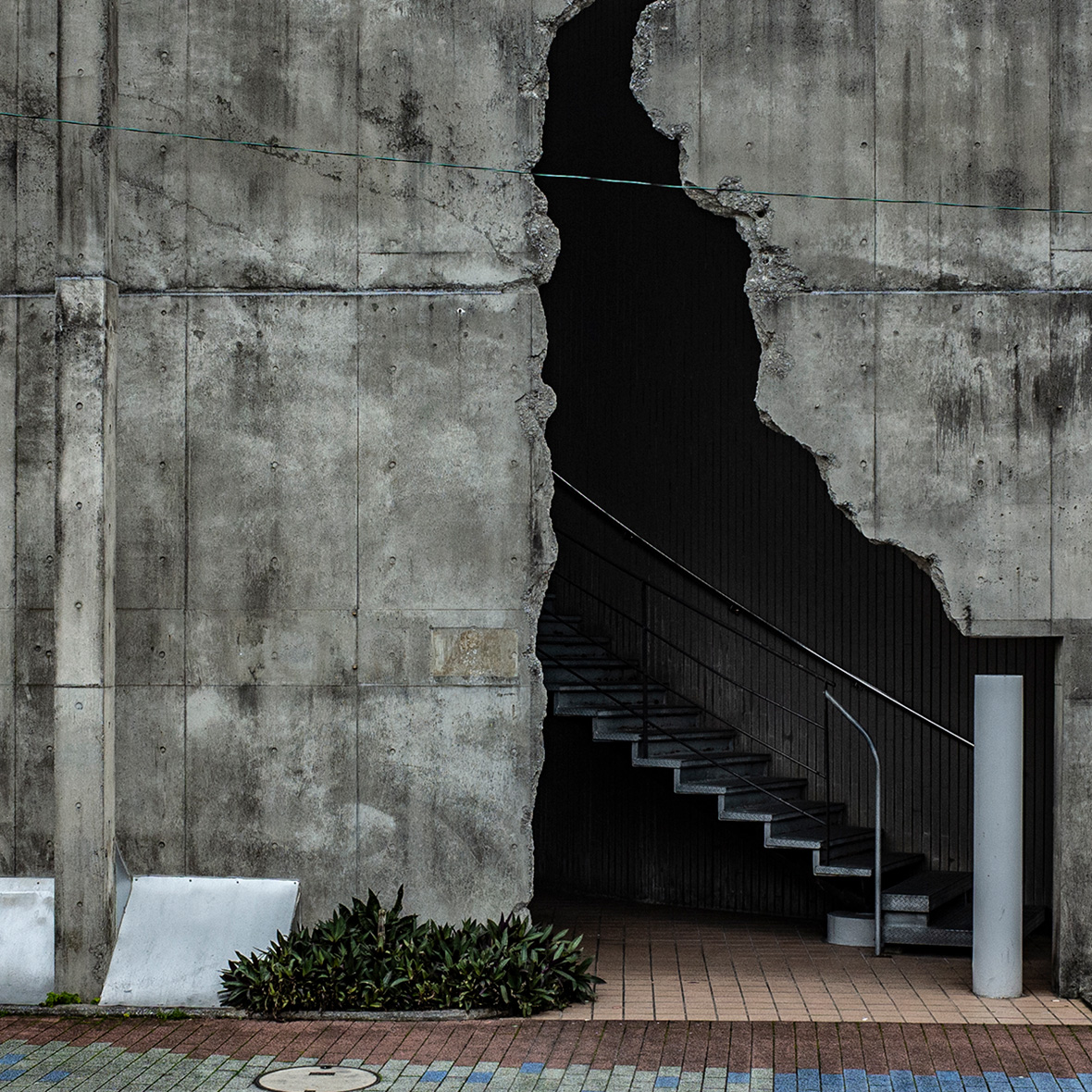
Fortunately, there’s a recently revived interest in brutalist architecture motivated by the appreciation of its honest aesthetic and retro-futuristic appeal. “This revival perhaps stems from a fascination with the visuals of ‘yesterday’s tomorrow’ and the fact that many brutalist buildings would not look out of place in a Star Wars movie,” Tulett says. But he thinks that, in Japan, however, there has been no revival. That’s because the architectural style has never really lost its force in the country—as it’s conspicuous with the Okinawan example—and was constantly employed due to its practical benefits. “Perhaps that’s why it is taken for granted here,” he says. “But this may well change with the re-use of the brutalist Tokyo 1964 buildings for Tokyo 2020 and result in the same brutalist revival seen in the West and in South Korea.”
Dubbed the “science fiction games,” the 1964 Tokyo Olympics showcased Japan’s resilience in overcoming the devastation of World War II. In the years before the event, Tokyo and many other parts of the country resembled giant construction sites. With the arrival of the Olympics, old ramshackle structures were replaced by an array of brand-new buildings, most of which were made of reinforced concrete. Modern stadiums and other sports facilities were also built. They were symbols of a new, democratic, and forward-thinking Japan. Some of these venues, including Tange’s Yoyogi Arena, will also host events in the Tokyo 2020 games, to happen this year despite the global pandemic.
In 1964, the opening ceremony had Yoshinori Sakai as the final torchbearer to light the Olympic cauldron. He stood triumphantly at the center of a spectacle celebrating an international community through sports, one into which his country was once more welcomed. But Sakai was not chosen based on his athletic prowess. He never even went as far as competing in an actual Olympics and only won his single gold medal the following year in the Asian Games in Bangkok. Far more important was the fact that he was born in Hiroshima on the same day the Americans dropped the atomic bomb. Sakai himself was the symbol of Japanese rebirth and endurance—as are the brutalist marvels that triumph over cityscapes all across the country.
现如今,野兽派建筑简单直白的美学风格和复古未来主义正在吸引越来越多人的关注。Paul 说:“这种复兴也许源于人们对‘复古未来风格’的兴趣,你会在科幻电影中发现很多类似的场景。”但在日本,野兽派建筑不但没有复兴,反而正在渐渐被人们遗忘。但考虑到其实际功能性、以及结实的构造,才使它们被勉强保留了下来。他接着说道:“很多日本人对野兽派建筑并不在意。但你看,2020 年东京奥运会重新启用了 1964 年的东京场馆,一切或许正在发生改观。”
1964 年日本东京奥运会被媒界称之为 “科幻竞技”,竞技场上展示了大量前卫科技,也让世人看到日本从二战中的迅速恢复。在东京奥运会之前的几年里,东京和日本其他许多地方还依旧是一大片建筑工地。随着奥运会的到来,崭新的建筑拔地而起,这些建筑物大多由钢筋混凝土建成。它们象征着一个全新、民主、前瞻的日本。其中一些场馆,包括丹下健三的代代木国立综合体育馆,也将在今年举办的 2020 年东京奥运会中重新使用。
1964 年东京奥运会开幕式上,19 岁男孩坂井义则(Yoshinori Sakai)作为最后一棒火炬手,点燃奥运圣火。他骄傲地站在这场盛典的中心,庆祝这场国际体育盛事在故乡召开,也庆祝着日本再度回归国际视野当中。但坂井义则被选中作为火炬手并不是因为他的运动能力。他甚至从未参加过真正意义上的奥运会,只在次年的曼谷亚运会上赢得过一枚金牌。他之所以能获此殊荣,是因为他出生于广岛,而他出生的那一天,正是美国用原子弹轰炸广岛的日子。坂井义代表着日本人战后重生的希望,如同野兽派建筑在日本的足迹,遍地开花。
Like our stories? Follow us on Facebook and Instagram.
Instagram: @brutal_zen
Contributors: Tomas Pinheiro
Chinese Translation: Olivia Li
Images Courtesy of Paul Tulett

